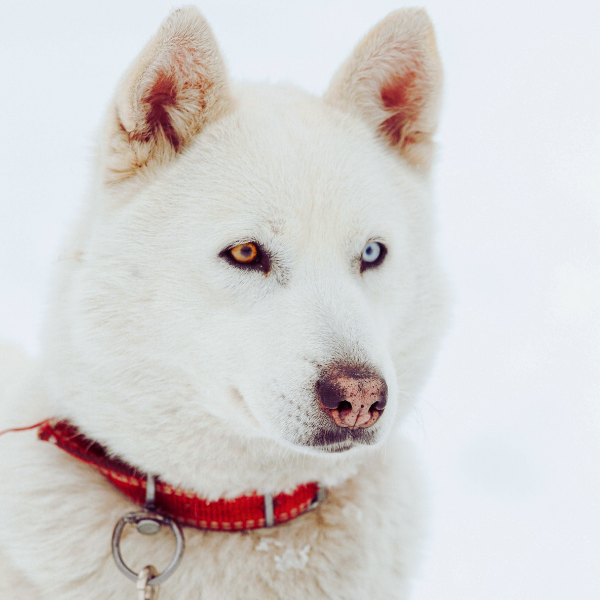
How does a dog see? Discover the world through its eyes
Share
How does a dog see? Discover the world through its eyes
The world your dog sees isn't the same as yours. If you thought dogs saw in black and white, think again! Their vision is much more subtle, but also very different from that of humans. So, how exactly does a dog see? Here's what science says.
Dichromatic vision
Humans have three types of cones in the retina ( trichromatic vision): red, green, and blue.
Dogs only have two: blue and yellow .
👉 Result:
- Dogs don't see red or green
- They see mainly blue , yellow , and shades of gray
A study by Neitz et al. (1989) demonstrated that dogs possess dichromatic vision comparable to that of a human with red-green color blindness .
Blue is therefore a bright and highly visible color for a dog.
What about sharpness?
Dogs have less sharp vision than we do:
- Visual acuity estimated at 20/75 to 20/100
- This means that an object that a human can see clearly at 75 meters, a dog will only see well at about 20 meters.
But on the other hand, their peripheral vision is wider (up to 240° ) and their sensitivity to movement is excellent, which makes them very effective at spotting movement at a distance.
And in the dark?
Dogs have much better night vision than humans:
- Thanks to a tapetum lucidum , a reflective layer behind the retina
- And larger pupils that let more light through
🔦 Result: in the dark, a dog distinguishes shapes and movements much better than a human .
Conclusion: How does a dog see?
- He does not see in black and white , but mainly distinguishes blue, yellow and shades of gray.
- His vision is less clear , but he detects movements very well
- He sees much better in the dark than we do.
- And he perceives the world in a different, but equally rich way.
Why is our PapattesBox blue?
At PapattesBox , we've chosen blue as the main color for your dog —not just for you.
- Because blue is part of its vision spectrum
- Because it's one of the few colors he can clearly distinguish.
- And because we want your dog to recognize his box as soon as it arrives
Our mission: to make his world a little more alive... and more colorful in his eyes.
Share this article!
Did you learn something?
Please feel free to share this article or discover our products.